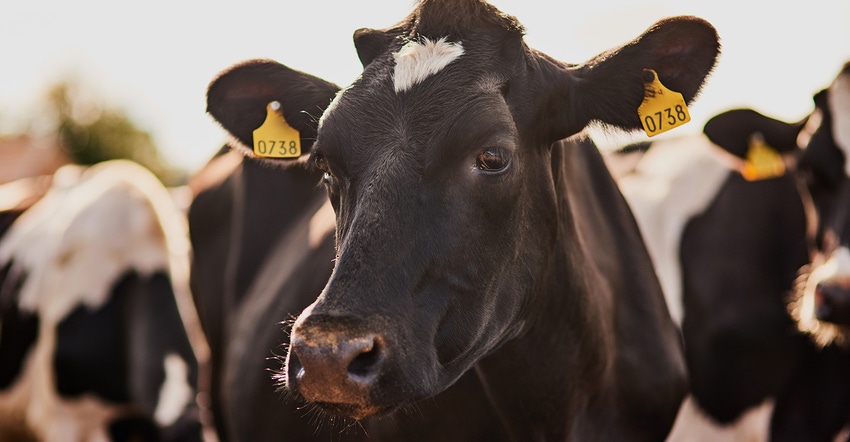Impacting microbial ecology of dairy cows
Promoting a microbial ecology that will help your cows thrive.
October 1, 2020

Sponsored Content
By Beth Galbraith, Research Manager – Animal Health, United Animal Health
For dairy cows, the microbiome couldn’t be more significant. It is well established that the microbiota of the rumen and intestine are crucial for basic functions such as digestion of complex feedstuffs, promotion of proper rumen and intestinal structure, and maintenance of fundamental metabolic functions (1). More recently, the microbiota’s complex and subtle role in shaping immune development, lifelong milk production and successful reproduction is becoming evident (2,3).
There is much current research focused on identifying microbial populations associated with milk production, feed efficiency, or methane production (3-4), suggesting the possibility of manipulating these populations to achieve production or health benefits. On the other hand, pathogenic microorganisms can alter rumen function, decrease fiber digestion, or compromise the gastrointestinal mucosa, creating health problems and lowering performance.
How can you promote a microbial ecology that will help your cows thrive?
Start with the basics. Quality feed and clean water are fundamental in nurturing the microbiota. Proper silage management and testing to monitor fungal organisms or mycotoxins and specific bacteria such as E. coli or Clostridium in the feed are important steps in helping the microbe-host partnership succeed.
Where possible, minimize abrupt changes that may disrupt the microbiota. Make gradual diet shifts, introducing new ingredients slowly to allow sensitive or slow-growing microbes including important fiber-degrading species time to adapt to the changing conditions and to provide new microbial populations a gentle integration into the complex web of cross-feeding networks, synergistic and competitive interactions that exist in the rumen and intestinal tract.
Minimize exposure to environmental pathogens through good management and sanitation practices. Gut-derived Gram-negative pathogens including specific E. coli and Salmonella thrive in warm and damp conditions and can flourish in manure and bedding. Spore-forming bacteria including Clostridium perfringens, C. septicum and C. chauvoei are widespread in soils and plant materials and can survive in the rumen and intestine, where they may cause serious disease. Commingling with sick cows or housing in facilities that are too warm, damp, humid, or poorly ventilated may all contribute to growth and spread of pathogenic microorganisms. Regular sanitation and cleaning protocols, segregation of sick cows, and proper management of temperature, dust, and airflow can all help to keep harmful pathogens at bay. Furthermore, improperly treated manure used as fertilizer or bedding may propagate undesirable microorganisms in the soil and on the crops that will later become feed for the herd, so good manure composting practice can substantially reduce the environmental risk.
Consider a direct-fed microbial. DFMs have shown benefit in enhancing the function of the intestinal barrier, excluding potential pathogens, and maintaining homeostasis in the gastrointestinal tract (5). However, strain selection is of critical importance when considering addition of a direct-fed microbial to dairy diets, and not all strains have the same capabilities or are appropriate for all applications
Consider monitoring through rectal swabbing. Techniques in molecular biology and microbiology have been rapidly evolving, improving understanding of rumen, intestinal and fecal microbiota in healthy and unhealthy cows. Molecular methods can help to detect and quantify undesirable bacteria, including clostridial species, Salmonella, and certain toxigenic E. coli, as well as virulence genes and toxin genes carried by pathogenic strains. Though sampling the rumen is not feasible in a commercial setting, rectal swabs may provide a snapshot of the microorganisms and toxin genes contributing to gut health, providing a complementary tool for monitoring cow health and subclinical threats to herd performance.
References
Mackie RI. (2002). Mutualistic fermentative digestion in the gastrointestinal tract: diversity and evolution 1. IntegrComp Biol 42: 319–326.
Malmuthuge N, Griebel PJ and Guan LL (2015). The gut microbiome and its potential role in the development and function of newborn calf gastrointestinal tract. Front. Vet. Sci. 2(36): 1-10.
Matthews C, Crispie F, Lewis E, Reid M, O’Toole PW and Cotter PD (2019). The rumen microbiome: a crucial consideration when optimising milk and meat production and nitrogen utilisation efficiency. Gut Microbes 10(2):115-132.
Cunha CS, Veloso CM, Marcondes MI, Mantovani HC, Tomich TR, Pereira LGR, Ferreira MFL, Kimberly A. Dill-McFarland KA, and Suen, G (2017). Assessing the impact of rumen microbial communities on methane emissions and production traits in Holstein cows in a tropical climate. Syst. Appl. Microbiol. 40(8):492-499.
Frizzo LS, Signorini ML, and Rosmini MR (2018) Probiotics and Prebiotics for the Health of Cattle. In: Di Gioia D., Biavati B. (eds) Probiotics and Prebiotics in Animal Health and Food Safety. Springer, Cham.
About the Author(s)
You May Also Like


.png?width=300&auto=webp&quality=80&disable=upscale)
